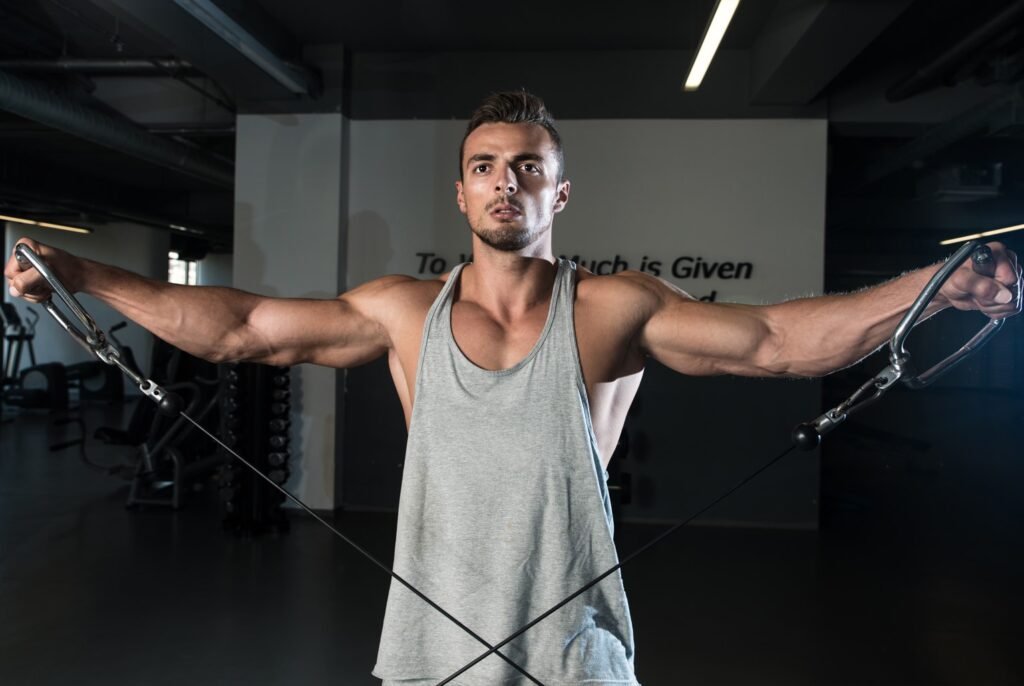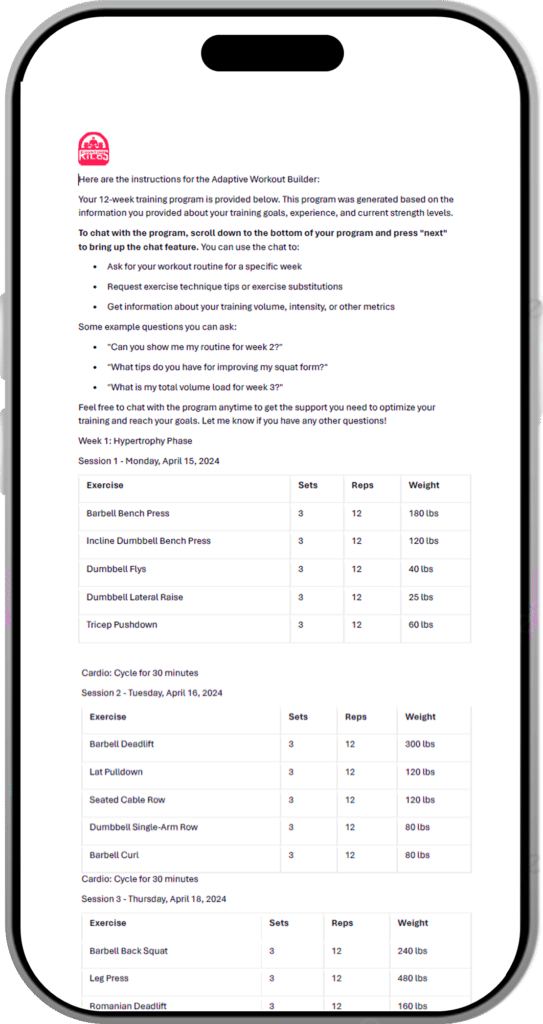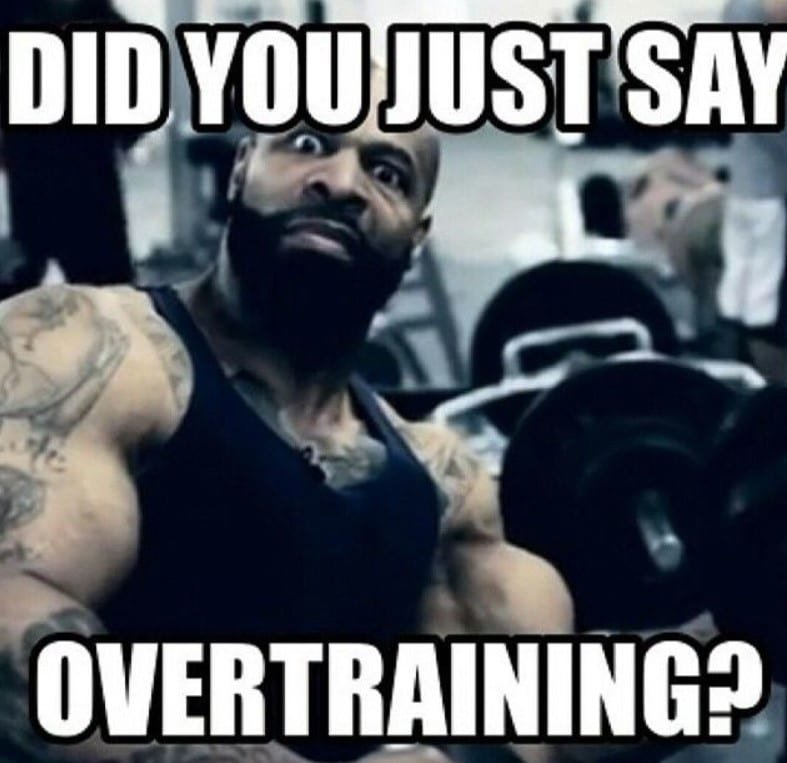Capped delts are the crown jewels of a well-developed physique – those round, full shoulder muscles that make your upper arms look like cannonballs ready to blast through any t-shirt. But here’s the kicker – they’re not just for show. Well-developed deltoids are crucial for shoulder health, overall upper body strength, and let’s be real, they give you that unmistakable look of someone who could bench press a small car without breaking a sweat.
Before we delve into the nitty-gritty, let’s break down the anatomy of the deltoid muscle. It’s not just one big lump of tissue; it’s composed of three distinct heads: anterior (front), lateral (side), and posterior (rear). To achieve those coveted capped delts, you need to target all three heads. It’s like a three-course meal for your shoulders, and trust me, you don’t want to skip any courses.
Now, I know what you’re thinking, “But Dr. Walters, I’ve been doing military presses until my arms feel like they’re going to fall off, and I still don’t have shoulders like bowling balls!” Well, my friend, Rome wasn’t built in a day, and neither are capped delts. It takes time, dedication, and a whole lot of smart training. So, let’s get into it.
Key Takeaways
- Capped delts require targeting all three heads of the deltoid muscle
- Shoulder health and stability are crucial for long-term development
- A balanced approach combining compound and isolation exercises is key
- Proper nutrition and recovery are as important as the training itself
- Consistency and patience are your best friends in the quest for capped delts

Introduction to Capped Delts
Definition and Goals
Alright, let’s get down to brass tacks. Capped delts are what we call fully developed, well-rounded shoulder muscles that give your upper arms that coveted 3D look. Picture a basketball cut in half and glued to each side of your shoulders – that’s what we’re aiming for here.

The deltoid muscle, or “delt” for short, is made up of three distinct heads:
- Anterior (front) deltoid
- Lateral (side) deltoid
- Posterior (rear) deltoid
Each of these heads plays a crucial role in shoulder function and aesthetics. The anterior deltoid helps with pushing movements and shoulder flexion. The lateral deltoid is responsible for lifting your arm to the side, while the posterior deltoid assists in pulling movements and external rotation.
Now, why are capped delts so desirable? Well, besides making you look like you could arm wrestle Thor, well-developed shoulders contribute to a balanced upper body appearance. They create that sought-after V-taper, making your waist appear smaller and your upper body more imposing. It’s like nature’s optical illusion, and who doesn’t love a good magic trick?
But it’s not all about looks. Strong, well-developed deltoids also provide numerous functional benefits:
- Improved shoulder stability
- Enhanced performance in various sports and activities
- Better posture (goodbye, hunched-over desk jockey look)
- Reduced risk of shoulder injuries
So, whether you’re looking to dominate your next beach volleyball game or just want to fill out your t-shirts better, capped delts should be on your fitness radar.
The Importance of Shoulder Health
Now, before you rush off to do a million lateral raises, let’s talk about something that’s more important than any exercise: shoulder health. Your shoulders are complex joints with a wide range of motion, which makes them prone to injury if not properly cared for.
Shoulder stability is the foundation upon which you’ll build your capped delts. Think of it like building a house – you wouldn’t start with the roof, would you? (If you would, please never invite me to your housewarming party). Stability comes from a combination of strong rotator cuff muscles, proper scapular (shoulder blade) movement, and balanced muscle development around the entire shoulder girdle.
One of the biggest risks when training shoulders is shoulder impingement. This occurs when the tendons of the rotator cuff muscles get pinched between the humerus (upper arm bone) and the acromion (part of the shoulder blade). It’s about as fun as it sounds, which is to say, not at all.
To avoid shoulder impingement:
- Always warm up properly before shoulder workouts
- Maintain good posture during exercises
- Use a full range of motion in your exercises (unless otherwise indicated)
- Balance pushing and pulling movements in your training
- Don’t neglect rotator cuff strengthening exercises
Remember, the goal is to build capped delts that last, not to impress people for a summer and then spend the next year in physical therapy. Trust me, I’ve seen enough blown-out shoulders to last a lifetime.
A balanced approach to shoulder training is key. This means not just focusing on the showy anterior delts with endless military presses, but giving equal love to all three heads of the deltoid. It’s like raising triplets – if you only pay attention to one, the others are going to let you know about it, usually in the form of muscle imbalances and potential injuries.
In the next sections, we’ll dive into the exercises and programming that will help you build those coveted capped delts while keeping your shoulders healthy and happy. So, grab your protein shake, and let’s get to work!

Key Exercises for Building Capped Delts
Overhead Pressing Movements
Alright, shoulder sculptors, it’s time to talk about the bread and butter of deltoid development: overhead pressing. If capped delts are the holy grail of shoulder aesthetics, then overhead pressing is the knight in shining armor that’s going to help you get there.
The importance of overhead work for deltoid development can’t be overstated. It’s like trying to build a sandcastle without sand – good luck with that. Overhead pressing primarily targets the anterior deltoid, but it also engages the lateral deltoid and even the posterior deltoid to some extent. Plus, it’s a compound movement that recruits other muscle groups, making it an efficient use of your gym time.
Let’s start with the king of overhead presses: the strict overhead press. Here’s how to do it with proper form:
- Start with the barbell at shoulder level, hands slightly wider than shoulder-width apart.
- Keep your core tight and glutes squeezed.
- Press the bar straight up, moving your head back slightly as the bar passes your face.
- Fully extend your arms at the top, bringing your head forward again.
- Lower the bar back to the starting position under control.
Common mistakes include arching the lower back excessively (this isn’t a limbo contest) and flaring the elbows out too much (keep them at about a 45-degree angle to your torso).
Now, let’s talk about variations. The push press is like the strict press’s more explosive cousin. It involves using a slight knee bend and leg drive to help press the weight overhead. This allows you to use heavier weights, which can be great for overall strength development. Just remember, it’s not a full-on squat – we’re building shoulders here, not reinventing the thruster.
Incline and flat bench pressing also play a role in shoulder development, particularly for the anterior deltoid. While they’re primarily chest exercises, they still give your front delts a good workout. Think of them as the supporting actors in your shoulder development movie – not the stars, but still important to the overall production.
Here’s a quick comparison of these pressing variations:
| Exercise | Primary Muscle Target | Strength Benefit | Hypertrophy Benefit |
|---|---|---|---|
| Strict Overhead Press | Anterior Deltoid | High | High |
| Push Press | Anterior Deltoid | Very High | Moderate |
| Incline Bench Press | Lower Chest/Anterior Deltoid | Moderate | High |
| Flat Bench Press | Chest/Anterior Deltoid | High | Moderate |
Remember, variety is the spice of life, and it’s also the key to well-rounded shoulder development. Mix up your pressing movements to keep your delts guessing and growing.
Lateral Raise Variations
Now that we’ve covered pressing movements, it’s time to give some love to the lateral deltoid. This is where lateral raises come into play, and let me tell you, if you want shoulders wider than an airport runway, you can’t skip these.
Lateral raises are crucial for developing that side deltoid cap that gives your shoulders that 3D look. They isolate the lateral deltoid in a way that compound movements just can’t match. It’s like the difference between painting with a roller and a fine-tipped brush – sometimes you need that precision work.
Here’s how to perform a proper dumbbell lateral raise:
- Start standing with dumbbells at your sides, palms facing your thighs.
- Keeping a slight bend in your elbows, raise the dumbbells out to the sides.
- Lift until your arms are parallel to the ground (or slightly above if you’re feeling spicy).
- Lower the weights back down under control.
Now, here’s where people often go wrong: swinging the weights up using momentum, shrugging their shoulders, or bending their elbows too much. Remember, this isn’t a full-body interpretive dance – it’s an isolation exercise. Control is key.

Let’s talk variations. Cable lateral raises are a great option because they provide constant tension throughout the movement. Plus, they make you look like you’re about to take flight, which is always a bonus.
Partial reps are another tool in your lateral raise arsenal. By focusing on the bottom portion of the movement, you can really torch those lateral delts. It’s like turning the difficulty up to 11 on your shoulder workout.
Here’s a quick rundown of lateral raise variations:
| Exercise | Equipment | Benefit |
|---|---|---|
| Dumbbell Lateral Raise | Dumbbells | Classic movement, easy to perform |
| Cable Lateral Raise | Cable Machine | Constant tension, great for drop sets |
| Partial Lateral Raise | Dumbbells or Cable | Increased time under tension for lateral delts |
| Leaning Lateral Raise | Dumbbell + Support | Increased range of motion |
Mix these up in your workouts to keep your lateral delts guessing and growing. Remember, variety is the spice of life, and it’s also the secret sauce for shoulder gains.

Posterior Deltoid Exercises
Alright, let’s talk about the often-neglected stepchild of the deltoid family: the posterior deltoid. If you’ve been ignoring your rear delts, it’s time to give them some attention. Trust me, you don’t want to end up looking like a Thanksgiving turkey – all breast and no back.
The importance of rear deltoid training can’t be overstated. Not only does it complete the 3D look of capped delts, but it also plays a crucial role in shoulder health and posture. Neglecting your rear delts is like trying to build a three-legged stool with only two legs – it’s just not going to work out well for anyone involved.
Let’s start with the classic rear delt fly. Here’s how to do it:
- Bend at the hips, keeping your back straight, until your torso is nearly parallel to the floor.
- Hold dumbbells with palms facing each other.
- Keeping a slight bend in your elbows, raise the dumbbells out to the sides until they’re in line with your shoulders.
- Lower the weights back down under control.
Remember, this isn’t a back exercise. Focus on feeling the contraction in your rear delts, not your upper back or traps.
Now, let’s talk about everyone’s favorite shoulder health exercise: the face pull. This movement is like a Swiss Army knife for your upper back and rear delts. Here’s how to do it:
- Set a cable pulley to about head height.
- Grasp the rope attachment with an overhand grip.
- Step back and pull the rope towards your face, spreading the ends of the rope as you do so.
- Focus on squeezing your rear delts and upper back at the end of the movement.
Face pulls not only work your rear delts but also help improve posture and shoulder health. It’s like killing three birds with one stone, except no birds are harmed, and you get awesome shoulders. Win-win.
Don’t forget about the role of rowing exercises in overall shoulder development. While they primarily target your back, rows also give your rear delts a good workout. It’s like getting a free side of fries with your burger – a delicious bonus.
Here’s a quick comparison of these rear delt exercises:
| Exercise | Equipment | Primary Benefit | Secondary Benefit |
|---|---|---|---|
| Rear Delt Fly | Dumbbells or Cable | Rear Delt Isolation | Improved Posture |
| Face Pull | Cable Machine | Shoulder Health | Rear Delt and Upper Back Strength |
| Bent-Over Row | Barbell or Dumbbell | Back Strength | Rear Delt Development |
Remember, a well-rounded shoulder routine hits all three heads of the deltoid. Don’t be that person with impressive front delts and nothing in the back. Nobody wants to look like they’re always leaning forward, unless you’re trying out for a role as Quasimodo in the local theater production.

Adaptive Workout Builder
STOP WASTING YOUR TIME WITHOUT A PLAN
- Personalized training programs based on user input.
- Customizable workouts targeting specific goals.
- Dynamic adjustments to workouts as progress is tracked.
- Options to request technique tips and exercise substitutions.
- Insights into training volume, intensity, and other metrics.
Programming for Capped Delts
Volume and Frequency Considerations
Alright, future shoulder boulder-holders, let’s talk about how to program your workouts for maximum delt-building potential. Because let’s face it, all the knowledge in the world won’t help if you’re training your shoulders with the frequency of a total solar eclipse.
First things first: how often should you be training those delts? Well, the good news is that shoulders are pretty resilient and can handle a fair amount of volume. Most research suggests that training each muscle group 2-3 times per week is optimal for growth. So, you could dedicate one day to a heavy shoulder workout and then sprinkle in some additional shoulder work on your chest or back days.
Here’s a sample weekly split that incorporates this frequency:
- Monday: Chest + Shoulders
- Tuesday: Back + Biceps
- Wednesday: Legs
- Thursday: Shoulders + Triceps
- Friday: Full Body (including some shoulder work)
- Saturday/Sunday: Rest or active recovery

Now, let’s talk about the concept of progressive overload. This is the gradual increase of weight, frequency, or number of repetitions in your strength training routine. It’s like leveling up in a video game, except instead of unlocking new weapons, you’re unlocking new gains.
To apply progressive overload to your shoulder training:
- Increase the weight you’re lifting over time
- Increase the number of reps you’re doing with the same weight
- Increase the number of sets
- Decrease rest time between sets
- Improve your form to make the exercise more effective
Remember, progress should be gradual. Don’t try to add 50 pounds to your overhead press in a week unless you want your rotator cuffs to hate you for the rest of your life.
Here’s a sample shoulder workout routine to get you started:
- Strict Overhead Press: 4 sets of 6-8 reps
- Seated Dumbbell Press: 3 sets of 8-10 reps
- Lateral Raises: 3 sets of 12-15 reps
- Face Pulls: 3 sets of 15-20 reps
- Rear Delt Flyes: 3 sets of 12-15 reps
Adjust the weights so that the last rep of each set is challenging but doable with good form. And remember, Rome wasn’t built in a day, and neither are capped delts. Consistency is key, so stick with your program and trust the process.
Balancing Shoulder Training with Other Muscle Groups
Now, as much as I love talking about shoulders (and believe me, I could do it all day), we need to address the elephant in the room: the rest of your body. Because let’s face it, having capped delts on top of a physique that looks like it’s never seen the inside of a gym is like putting a cherry on top of a mud pie. It just doesn’t work.
Chest and back training are particularly important for overall upper body development. These muscle groups work synergistically with your shoulders in many movements. Plus, a well-developed chest and back will make your shoulders look even more impressive. It’s like the perfect frame for your shoulder masterpiece.
Here’s how you can integrate shoulder work into a full-body training program:
- Push-Pull-Legs Split: This classic split allows you to hit shoulders twice a week. On push day, you’ll do shoulder presses and lateral raises. On pull day, you can incorporate face pulls and rear delt work.
- Upper-Lower Split: In this four-day split, you’ll have two upper body days where you can incorporate shoulder work alongside chest and back exercises.
- Full Body Workouts: If you’re training full body three times a week, include at least one shoulder exercise in each workout, rotating between pressing movements, lateral raises, and rear delt work.
The key is to find a balance that allows you to train your shoulders effectively while still dedicating enough volume to other major muscle groups like your chest, back, and legs. Don’t neglect any body part, or you’ll end up looking like a patchwork quilt of muscle imbalances.
Remember, the goal is overall aesthetic and functional development, not just massive delts at the expense of everything else. So, train smart, train hard, and don’t skip leg day – nobody wants to look like they’re walking on toothpicks.

Nutrition and Recovery for Shoulder Growth
Alright, my dedicated delt disciples, we’ve covered the exercises and programming necessary for building those coveted capped shoulders. But let me ask you this: have you ever tried to build a house without the proper materials? It’s not going to end well, my friend.
The same principle applies to muscle growth. You can train like a beast, but if your nutrition and recovery game isn’t on point, you’ll be spinning your wheels faster than a hamster on a sugar rush.
Nutritional Requirements
Let’s start with the building blocks of muscle growth: protein. Without adequate protein intake, your delts (and the rest of your muscles) will struggle to repair and grow after those intense workouts. Aim for at least 1 gram of protein per pound of body weight per day, depending on your activity level and goals.
But wait, there’s more! You also need to ensure you’re consuming enough overall calories to support muscle growth. This is where the concept of being in a caloric surplus comes into play. A modest surplus of around 300-500 calories above your maintenance level can provide the energy your body needs to build new muscle tissue.
Don’t forget about those micronutrients, either. Vitamins and minerals like zinc, magnesium, and vitamin D play crucial roles in muscle recovery, hormone production, and overall joint health. Make sure your diet includes plenty of nutrient-dense whole foods like lean meats, vegetables, fruits, and healthy fats.
Here’s a quick breakdown of key nutritional considerations for shoulder growth:
- Protein: 0.7-1 gram per pound of body weight per day
- Calorie Surplus: 300-500 calories above maintenance
- Key Micronutrients: Zinc, Magnesium, Vitamin D

Recovery Strategies
Now, let’s talk about the often-overlooked aspect of muscle growth: recovery. You can train like a madman and eat like a king, but if you don’t give your body the rest and recovery it needs, you’ll be stuck in a perpetual cycle of fatigue and stagnation.
First and foremost, make sure you’re getting enough rest between shoulder workouts. Depending on your training frequency and overall volume, you may need 48-72 hours of rest before hitting those delts again. Listen to your body and don’t be afraid to take an extra day off if you’re feeling particularly beat up.
Proper sleep is also crucial for recovery and growth. Aim for 7-9 hours of quality sleep per night to allow your body to fully recover and optimize hormone production. And no, passing out on the couch after a Netflix binge doesn’t count.
Additionally, consider implementing active recovery strategies like light cardio, foam rolling, and stretching on your off days. These can help improve blood flow, reduce muscle soreness, and promote overall recovery.
Here’s a quick summary of key recovery strategies:
- Adequate Rest Between Workouts: 48-72 hours
- Quality Sleep: 7-9 hours per night
- Active Recovery: Light cardio, foam rolling, stretching
Remember, building capped delts is a marathon, not a sprint. Prioritize recovery, and your muscles will thank you in the long run.

Long-Term Consistency and Patience
Alright, my friends, we’ve covered the exercises, programming, nutrition, and recovery strategies necessary for building those coveted capped delts. But before we wrap things up, there’s one final, crucial aspect we need to discuss: long-term consistency and patience.
Let’s be real here – building impressive, boulder-like shoulders isn’t something that happens overnight. It’s a journey, a marathon, a quest that requires unwavering dedication and a whole lot of patience.
The Importance of Time and Dedication
I’m not going to sugarcoat it – building truly impressive capped delts can take years of consistent, focused training. We’re talking 18 months to 2 years for most people to see significant progress, and potentially even longer for those with less-than-optimal genetics.
But here’s the thing: that’s okay. In fact, it’s more than okay – it’s a testament to the dedication and perseverance required to achieve something truly remarkable. Because let’s face it, if it were easy, everyone would have shoulders like cannonballs.
Genetics also play a role in shoulder development, just like with any other muscle group. Some people are blessed with the deltoid-building genes of a Greek god, while others may have to work a little harder to achieve the same results. But here’s the good news: with enough time, effort, and smart programming, even those with less-than-stellar genetics can build impressive capped delts.
The key is to embrace the journey, celebrate the small victories along the way, and never lose sight of your ultimate goal. Because trust me, when you finally achieve those boulder shoulders you’ve been chasing, it’ll all be worth it.
Tracking Progress and Adjusting Your Approach
Speaking of the journey, it’s important to track your progress and be willing to adjust your approach as needed. Remember, what works for one person might not work for another, and what works for you today might not work six months from now.
Start by taking progress photos and measurements at regular intervals (every 4-8 weeks is a good guideline). This will help you objectively assess your progress and identify areas that may need more attention.
If you find yourself hitting a plateau, don’t panic – it’s a natural part of the process. Instead, take a step back and reevaluate your approach. Are you still progressively overloading? Have you become too comfortable with your current routine? Are there any areas of your program that could use some tweaking?
Be willing to experiment with different training techniques, rep ranges, and exercise variations. Sometimes, all it takes is a fresh stimulus to kickstart new growth.
And above all else, be patient. Trust the process, stay consistent, and remember that building truly impressive capped delts is a marathon, not a sprint. Embrace the journey, and the destination will be all the sweeter.

Common Mistakes and How to Avoid Them
Alright, my dedicated delt disciples, we’ve covered a lot of ground in our quest for capped shoulders. But before we wrap things up, let’s address some common mistakes that can derail your progress and potentially lead to injury.
Overtraining and Injury Prevention
One of the biggest pitfalls when it comes to shoulder training is overtraining. It’s easy to get caught up in the pursuit of gains and push your delts too hard, too often. But trust me, your shoulders will let you know when you’ve gone too far, and it won’t be pretty.
Signs of shoulder overtraining can include:
- Persistent soreness or pain
- Decreased range of motion
- Decreased strength or performance
- Difficulty recovering between workouts
To avoid overtraining, it’s crucial to listen to your body and respect the recovery process. Don’t be afraid to take a deload week or even a full week off from shoulder training if you’re feeling particularly beat up.
Proper warm-up and cool-down routines are also essential for injury prevention. Start your shoulder workouts with some light cardio and dynamic stretching to increase blood flow and prepare your muscles and joints for the work ahead. And don’t skip the cool-down – spend a few minutes doing some static stretches and foam rolling to help reduce soreness and promote recovery.
Common shoulder injuries to be aware of include:
- Rotator cuff strains or tears
- Shoulder impingement
- Labral tears
- Biceps tendonitis
If you experience persistent pain or discomfort, don’t try to power through it – seek medical attention from a qualified professional.

Form and Technique Errors
Another common pitfall in the quest for capped delts is poor form and technique. Exercises like overhead presses, lateral raises, and rear delt flyes require a high degree of control and proper execution to be effective (and safe).
Common form mistakes to avoid include:
- Arching the lower back excessively during overhead presses
- Swinging the weights or using momentum during lateral raises
- Allowing the elbows to flare out too much during pressing movements
- Rounding the shoulders forward during rear delt flyes
Developing a strong mind-muscle connection is key to proper form and technique. Focus on feeling the target muscle working throughout each movement, and don’t be afraid to use lighter weights if it means maintaining better control.
Controlled eccentrics (the lowering portion of the movement) are also crucial for shoulder development. Lowering the weight with control not only increases time under tension but also helps reinforce proper movement patterns and engage stabilizing muscles.
Remember, it’s better to lift lighter weights with perfect form than to ego-lift heavy weights with sloppy technique. Not only will you get better results, but you’ll also reduce your risk of injury in the long run.
Advanced Techniques for Capped Delts
Alright, my dedicated delt disciples, we’ve covered the fundamentals of building capped shoulders – the exercises, programming, nutrition, recovery, and common mistakes to avoid. But for those of you who are truly committed to the pursuit of deltoid greatness, let’s explore some advanced techniques that can take your shoulder development to the next level.
Drop Sets and Supersets
Drop sets and supersets are two powerful techniques that can help you push past plateaus and break through stubborn growth barriers. But be warned – these techniques are not for the faint of heart (or the weak of will).
Drop sets involve performing a set to failure, then immediately reducing the weight and continuing to failure again. This allows you to extend the set beyond what would normally be possible, increasing time under tension and metabolic stress on the target muscle.
To perform a drop set for lateral raises, for example:
- Start with a weight you can lift for 10-12 reps.
- Perform as many reps as possible to failure.
- Immediately reduce the weight by 25-30%.
- Continue performing reps to failure with the reduced weight.
- Repeat for as many drops as you can handle (2-3 is a good starting point).
Supersets, on the other hand, involve performing two exercises back-to-back with minimal rest in between. This technique allows you to hit the target muscle from multiple angles, increasing overall volume and metabolic stress.
A classic superset for shoulders might look something like this:
- Seated Dumbbell Shoulder Press: 10-12 reps
- Lateral Raises: 10-12 reps
- Rest for 60-90 seconds, then repeat for 3-4 total rounds.
Both drop sets and supersets should be used sparingly, as they can be incredibly taxing on the body. Aim to incorporate them into your routine once every 4-6 weeks, or when you feel like you’ve hit a plateau in your shoulder development.

Isometric and Eccentric Training
Isometric and eccentric training are two advanced techniques that can help you build strength, stability, and muscle growth in your shoulders – but they’re not for the faint of heart.
Essentially, isometric training involves holding a muscle contraction in a static position for an extended period. This type of training can be particularly effective for building strength and stability in the shoulder joint, as well as improving mind-muscle connection.
One example of an isometric shoulder exercise is the overhead hold:
- Stand with your feet shoulder-width apart, holding a barbell or dumbbells overhead.
- Engage your core and glutes, and press the weights overhead, fully extending your arms.
- Hold this position for 30-60 seconds, focusing on squeezing your deltoids and maintaining perfect form.
Eccentric training, on the other hand, involves emphasizing the lowering (or eccentric) portion of an exercise. This type of training can create significant muscle damage and metabolic stress, which can lead to increased growth and strength gains.
To incorporate eccentric training into your shoulder routine, you can try techniques like:
- Eccentric-focused lateral raises: Take 3-4 seconds to lower the weight during each rep.
- Eccentric-focused overhead presses: Use a spotter or safety pins to assist with the concentric (lifting) portion, then lower the weight under control.
- Eccentric-focused rear delt flyes: Perform the concentric portion with both arms, then lower one arm at a time under control.
As with drop sets and supersets, isometric and eccentric training should be used judiciously and cycled in and out of your routine to avoid overtraining. Start with lower volumes and intensities, and gradually increase as your body adapts to these advanced techniques.
Remember, building truly impressive capped delts is a journey, and these advanced techniques are tools to be used strategically along the way. Consistency, patience, and a willingness to experiment will be your greatest allies in the pursuit of deltoid greatness.
Conclusion
As we conclude our ultimate guide to sculpting capped delts, it’s important to remember that this is just the beginning of your journey. Building truly remarkable, boulder-like shoulders requires an unwavering commitment to the process, an abundance of patience, and a relentless pursuit of growth.
There will be challenges along the way – plateaus, setbacks, and moments of frustration. But it’s how you respond to these obstacles that will ultimately determine your success. Embrace the journey, celebrate the small victories, and never lose sight of your ultimate goal.
Stay dedicated, stay consistent, and never stop learning. The pursuit of deltoid greatness is a lifelong endeavor, and there’s always room for improvement. Keep pushing, keep grinding, and keep sculpting those powerful shoulders. The road may be long, but the destination is truly extraordinary.




I am not sure where youre getting your info but good topic I needs to spend some time learning much more or understanding more Thanks for magnificent info I was looking for this information for my mission
Hey there You have done a fantastic job I will certainly digg it and personally recommend to my friends Im confident theyll be benefited from this site
Simply wish to say your article is as amazing The clearness in your post is just nice and i could assume youre an expert on this subject Well with your permission let me to grab your feed to keep updated with forthcoming post Thanks a million and please carry on the gratifying work
My brother suggested I might like this blog He was totally right This post actually made my day You can not imagine simply how much time I had spent for this info Thanks